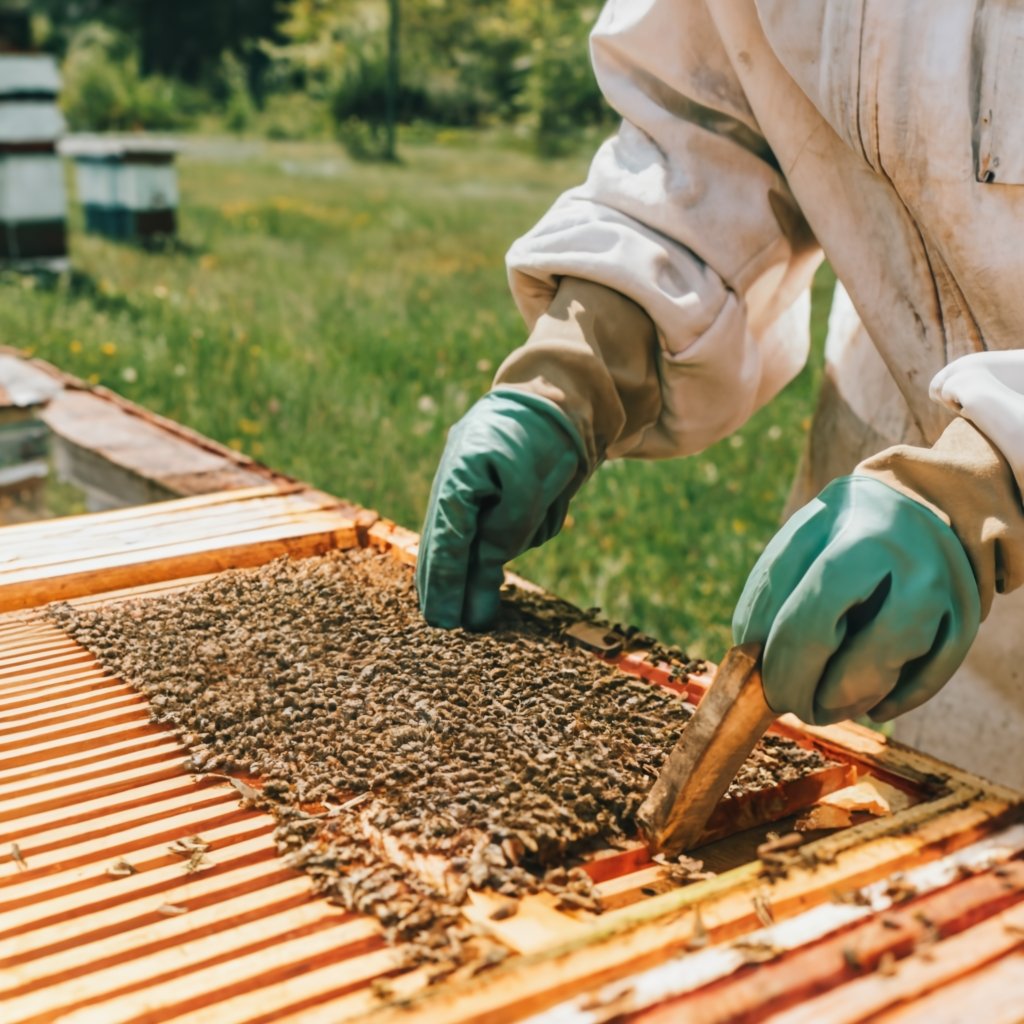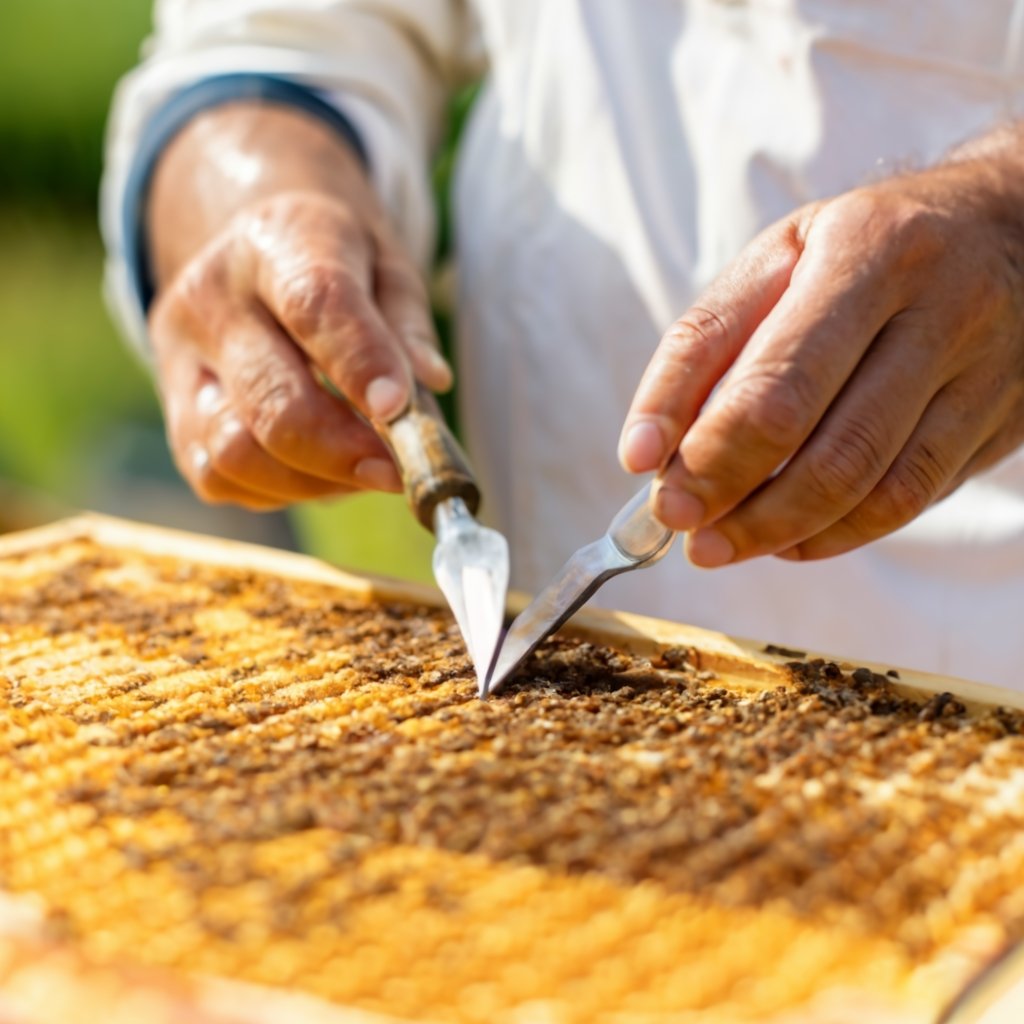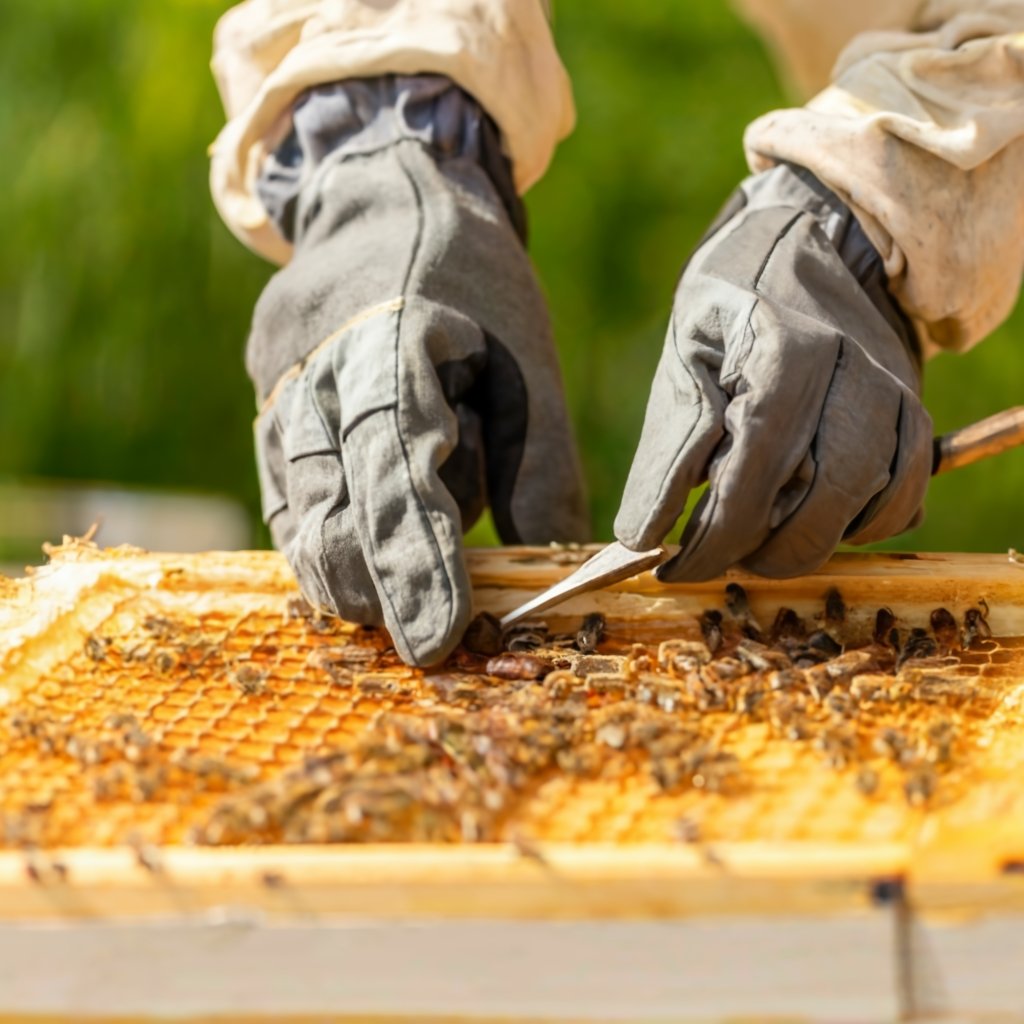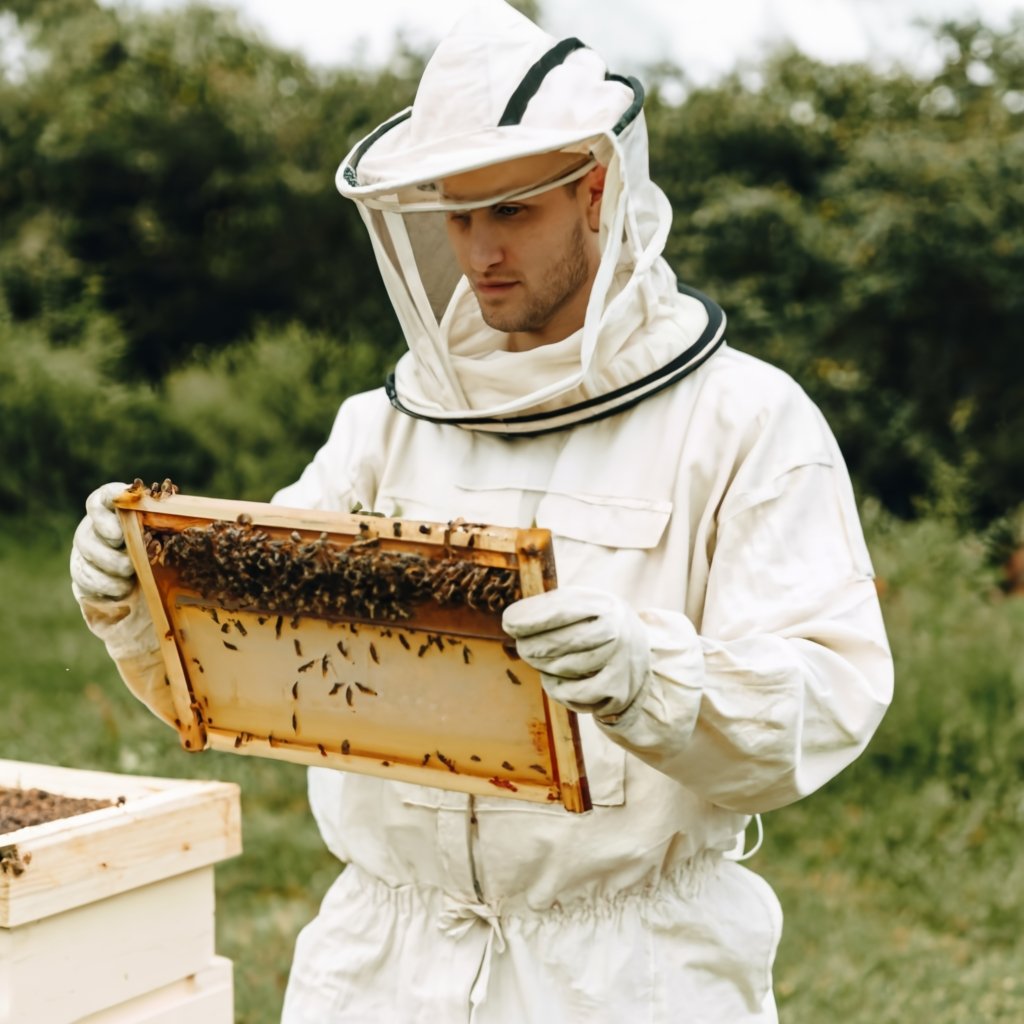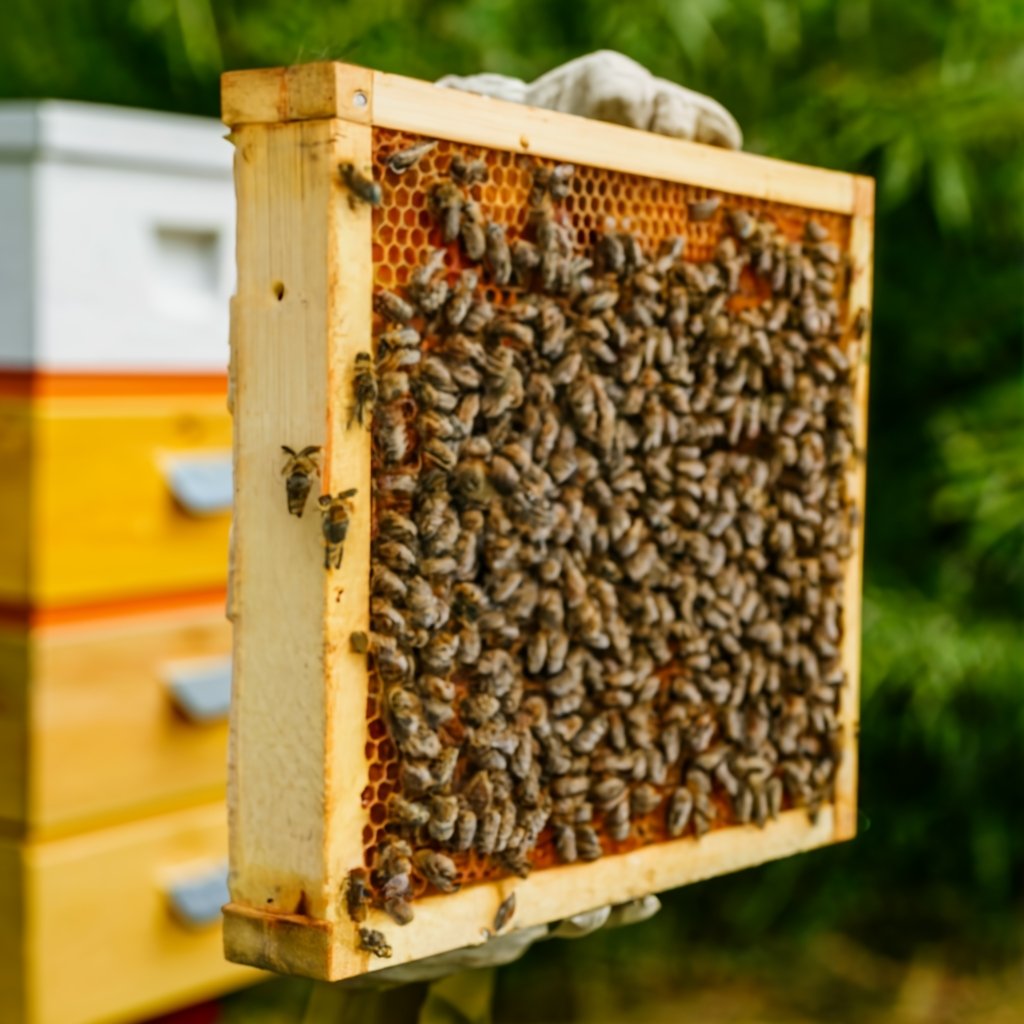Beekeeping Tools
Elevate your beekeeping journey with our eco-friendly and durable tools designed for optimal hive health.
Essentials of Beekeeping: A Guide to Key Tools and Equipment
Table of Contents
- 1 Beekeeping Tools
- 1.1 Essentials of Beekeeping: A Guide to Key Tools and Equipment
- 1.2 Key Features About Beekeeping Tools
- 1.3 Types of Beekeeping Tools and Their Uses
- 1.4 Maintenance and Cleaning of Beekeeping Equipment
- 1.5 Best Practices in Beekeeping Tool Use
- 1.6 Advanced Tools and Technologies in Beekeeping
- 1.7 Challenges and Considerations
- 1.8 Conclusion
- 1.9 BEEKEEPING TOOLS – FAQs
- 1.9.1 What are the essential tools for beginner beekeepers?
- 1.9.2 How do you use a bee smoker?
- 1.9.3 What is the purpose of a beekeeping veil?
- 1.9.4 Why are bee gloves necessary?
- 1.9.5 What is a hive tool used for in beekeeping?
- 1.9.6 How often should beekeeping equipment be cleaned?
- 1.9.7 What's the best way to extract honey from the comb?
- 1.9.8 How do you maintain a bee smoker?
- 1.9.9 Can you reuse beekeeping frames?
- 1.9.10 What materials are bee suits made of?
- 1.9.11 What is a bee brush used for?
- 1.9.12 How do you choose the right size for a bee suit?
- 1.9.13 What is the role of a queen excluder in beekeeping?
- 1.9.14 How do you light a bee smoker?
- 1.9.15 What is the best way to store beekeeping tools?
- 1.9.16 How do you clean a bee suit?
- 1.9.17 Are synthetic or leather gloves better for beekeeping?
- 1.9.18 What safety precautions should be taken during hive inspection?
- 1.9.19 How do you prevent propolis from sticking to the tools?
- 1.9.20 Can beekeeping tools be shared between different hives?
- 1.9.21 How do you handle bees while using a bee brush?
- 1.9.22 What is the lifespan of a typical beekeeping suit?
- 1.9.23 How do you choose the right bee smoker size?
- 1.9.24 What are the benefits of ventilated bee suits?
- 1.9.25 How do you sanitize beekeeping tools?
Beekeeping, a practice as ancient as it is vital, hinges on the effective use of specialized tools that aid in the management and maintenance of bee colonies. Central to this arsenal of equipment is the bee suit and veil, indispensable for protecting beekeepers from stings while allowing close interaction with the hive. Made from materials like thick cotton, these suits are designed to be sting-resistant yet breathable, ensuring comfort during hive inspections. Gloves, typically made of leather or a durable synthetic blend, offer additional protection for hands and arms. The bee smoker, another cornerstone of beekeeping, plays a critical role in calming bees. Filled with materials like pine needles or wood chips, the smoker emits a gentle smoke that masks the bees’ alarm pheromones, making hive management tasks safer and more manageable.
Further into the hive, tools such as the hive tool and bee brush become indispensable. The hive tool, a simple yet versatile piece of equipment, is used for prying apart hive bodies and frames, scraping off excess wax and propolis, and aiding in various other hive manipulation tasks. Its durability, often being made from stainless steel, ensures it can withstand the rigors of beekeeping. The bee brush, with its soft bristles, is used to gently coax bees away from certain areas, particularly during honey harvesting or while performing hive inspections. For the honey extraction process itself, beekeepers rely on extractors, which use centrifugal force to draw honey out of the comb without destroying it, and uncapping tools to remove the wax seal from the honeycomb cells. These tools exemplify the blend of tradition and innovation in beekeeping, showcasing how time-honored practices are supported by continually evolving tools and techniques.
Each tool in a beekeeper’s kit serves a specific purpose, contributing to the overall health and productivity of the bee colony. From protective gear to extraction equipment, these tools are vital for not only the maintenance of the hives but also for the safety and efficiency of the beekeeper. As the practice of beekeeping evolves, so too do the tools, with new technologies and materials offering improved ways to interact with and care for these essential creatures.
Key Features About Beekeeping Tools
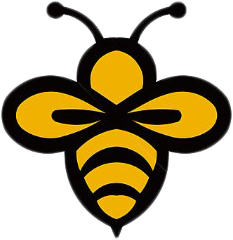
Protective Clothing: Essential for safeguarding against bee stings; includes full-body suits, gloves, and veils.

Bee Smokers: Calms bees during hive inspections; essential for safe hive management.

Hive Tools: Versatile instruments used for opening hives, prying apart frames, and scraping excess wax.

Bee Brushes: Soft-bristled tools for gently removing bees from surfaces during inspections and honey harvesting.

Frames and Foundations: Support structures for bees to build their comb; crucial for honey production and brood rearing.

Feeders: Provide supplemental nutrition to bees, especially during nectar shortages or in urban settings.

Honey Extracting Equipment: Includes extractors, uncapping tools, and filters for honey collection and processing.

Durability and Material Quality: Beekeeping tools are often made from stainless steel and other durable materials for longevity.

Ease of Cleaning and Maintenance: Tools are designed for easy cleaning to maintain hygiene and prevent disease spread.

Ergonomic Design: Tools are crafted for ease of use, reducing strain during prolonged beekeeping activities.

Safety Features: Protective gear is designed to offer maximum protection with comfort and breathability.

Customization and Scalability: Equipment is available in various sizes and configurations to suit different scales of beekeeping operations.

Environmental Considerations: Tools and practices are increasingly focusing on sustainability and minimal impact on bee populations.

Technological Integration: Advanced tools incorporate technology for monitoring and managing hives more efficiently.

Pest and Disease Management Tools: Includes items like queen excluders and varroa mite treatments to maintain healthy hives.
Types of Beekeeping Tools and Their Uses
Beekeeping involves a variety of tools, each serving a specific purpose:
Bee Suit and Protective Gear
Full-body suits with veils to protect against bee stings.
Gloves, often made of leather or thick cloth, to protect hands and arms.
Beekeeping hats and veils are essential for facial protection.
Smokers and Fuel
Smokers produce smoke that calms bees, making hive management safer.
Common fuels include pine needles, wood chips, or cardboard.
Hive Tools
Essential for opening hives, prying apart frames, and scraping off excess wax.
Commonly made of stainless steel for durability.
Bee Brushes
Soft-bristled brushes used to gently remove bees from surfaces without harming them.
Frames and Foundations
Frames hold the honeycomb inside the hive.
Foundations provide a base for bees to build their comb.
Feeders
Used to feed bees, especially during times of nectar shortage.
Can be internal (inside the hive) or external.
Extracting Equipment
Honey extractors spin frames to force honey out of the comb.
Uncapping knives or forks are used to remove the wax cap from honeycomb.
Unleash the full potential of your beekeeping journey with our premium range of beekeeping tools
– Elevate your hive management today!”
Maintenance and Cleaning of Beekeeping Equipment

Regular cleaning and maintenance are crucial for the longevity of beekeeping tools and the health of the hive.

Tools should be cleaned with mild soapy water; harsh chemicals must be avoided.

Smokers require regular removal of ash and debris to ensure proper airflow.

Frames and foundations may need to be replaced periodically to prevent disease.
Best Practices in Beekeeping Tool Use

Always wear protective gear when handling bees or opening hives.

Use smokers judiciously to calm bees without over-smoking, which can harm them.

Regular inspections of the hive using hive tools are essential for bee health and honey production monitoring.

Feeders should be used responsibly to supplement bees’ natural food sources, not replace them.
Advanced Tools and Technologies in Beekeeping
Electronic Hive Scales
For monitoring hive weight and health remotely.
Thermal Imaging Cameras
To check hive health without opening the hive.
GPS Tracking
For locating and managing hives, especially in large-scale operations.
Challenges and Considerations
Pest and Disease Management
- Tools like queen excluders help manage hive health but require careful use.
Seasonal Adjustments
Beekeepers must adjust their tools and techniques according to the seasons.
Sustainability
Choosing eco-friendly and sustainable tools can impact the overall health of the environment.
Conclusion
Beekeeping is a nuanced practice that requires specific tools and knowledge. From protective clothing to sophisticated extracting equipment, each tool plays a crucial role in successful hive management. Understanding and properly utilizing these tools can lead to a rewarding experience in beekeeping, benefiting both the bees and the beekeeper. Regular maintenance, along with the adoption of new technologies, can enhance the efficiency and productivity of beekeeping practices.
BEEKEEPING TOOLS – FAQs
What are the essential tools for beginner beekeepers?
Essential tools for beginner beekeepers include a bee suit with a veil, gloves, a smoker, a hive tool, bee brushes, and at least one hive.
How do you use a bee smoker?
A bee smoker is used to calm bees by generating smoke that interferes with their pheromone communication. Light the smoker with materials like pine needles or cardboard, then gently puff smoke at the hive entrance and under the lid before inspections.
What is the purpose of a beekeeping veil?
A beekeeping veil protects the face and neck from bee stings, ensuring safety while inspecting and managing the hive.
Why are bee gloves necessary?
Bee gloves protect the hands and arms from stings and make handling hive components safer and more comfortable.
What is a hive tool used for in beekeeping?
A hive tool is a versatile instrument used to pry apart hive bodies, scrape off excess wax and propolis, and lift frames.
How often should beekeeping equipment be cleaned?
Beekeeping equipment should be cleaned regularly, ideally after each use, to maintain hygiene and prevent disease spread among bees.
What's the best way to extract honey from the comb?
The best way to extract honey is by using a honey extractor, which spins the frames, forcing honey out of the comb without destroying it.
How do you maintain a bee smoker?
Maintain a bee smoker by regularly cleaning out ash and residue, ensuring air flow is unobstructed, and storing it in a dry place.
Can you reuse beekeeping frames?
Yes, beekeeping frames can be reused after cleaning and ensuring they are free from disease and pests.
What materials are bee suits made of?
Bee suits are typically made of lightweight, breathable, and sting-proof materials like cotton, polyester, or a blend of both.
What is a bee brush used for?
A bee brush is gently used to remove bees from frames, especially during honey extraction or hive inspections.
How do you choose the right size for a bee suit?
Choose a bee suit based on your body measurements, ensuring it fits comfortably with enough room for movement without being too loose.
What is the role of a queen excluder in beekeeping?
A queen excluder is placed between the brood boxes and honey supers to prevent the queen from laying eggs in the honeycomb.
How do you light a bee smoker?
Light a bee smoker using a small, easily combustible material like pine needles or smoker pellets, then add larger fuel once it’s lit.
What is the best way to store beekeeping tools?
Store beekeeping tools in a dry, clean, and organized space to prevent rust and deterioration.
How do you clean a bee suit?
Clean a bee suit by washing it in cold water with a mild detergent, avoiding bleach, and air drying it away from direct sunlight.
Are synthetic or leather gloves better for beekeeping?
Both synthetic and leather gloves have their advantages; leather is more durable and offers better sting protection, while synthetic gloves provide better dexterity.
What safety precautions should be taken during hive inspection?
Wear protective clothing, use a smoker, move slowly and gently, and inspect during warm, calm weather for safety during hive inspections.
How do you prevent propolis from sticking to the tools?
Regularly clean tools with warm soapy water and consider lightly oiling them to prevent propolis from sticking.
Yes, but it’s important to sanitize them between uses to prevent the spread of diseases and pests between hives.
How do you handle bees while using a bee brush?
Handle bees gently with a bee brush, using soft, slow strokes to avoid agitating them.
What is the lifespan of a typical beekeeping suit?
The lifespan of a beekeeping suit varies based on material quality and frequency of use, but they typically last several years with proper care.
How do you choose the right bee smoker size?
Choose a bee smoker size based on your hive count; larger smokers last longer and are better for multiple hives, while smaller ones suffice for just a few hives.
What are the benefits of ventilated bee suits?
Ventilated bee suits offer better air circulation, keeping beekeepers cooler and more comfortable during inspections in warm weather.
How do you sanitize beekeeping tools?
Sanitize beekeeping tools with a solution of bleach and water or a specialized beekeeping equipment cleaner, and rinse thoroughly after cleaning.

